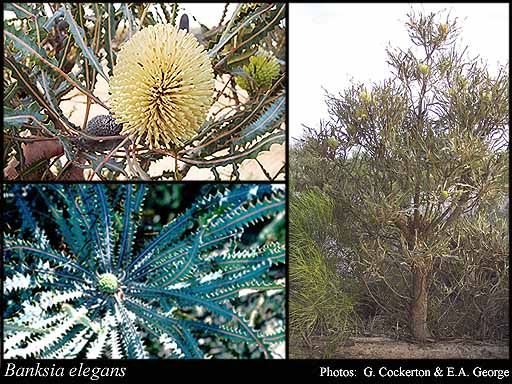- Reference
- Hooker's J.Bot.Kew Gard.Misc. 7:119 (1855)
- Conservation Code
- Priority Four
- Naturalised Status
- Native to Western Australia
- Name Status
- Current
Shrub (with fire-tolerant rootstock, often suckering), 1-4 m high. Fl. yellow/green-yellow, Oct to Nov. Yellow, white or red sand. Sandplains, low consolidated dunes.

Scientific Description
Trees or Shrubs, 2-5 m high; branchlets glabrous or hairy. Leaves petiolate, alternate, 150-290 mm long, 8-815 mm wide, hairy; petiole 20-60 mm long; lamina flat, once divided, pinnately divided, shallowly divided, teeth pointing outwards, with 18-38 lobes on each side, the margins flat. Inflorescences villous (with soft, shaggy, weak and straight hairs), green or yellow; innermost bracts 2-4.5 mm long, hairy. Perianth 25-29 mm long, glabrous, without awns; pistil 25-28 mm long, straight, style hairy. Follicles glabrous or hairy, tomentose (with matted or tangled, soft, woolly hairs), ovate, 20-25 mm long. Flowers in October or November. Occurs in the Eremaean (ER) or South-west (SW) Botanical Province(s), in the Murchison (MUR), Geraldton Sandplains (GS) or Avon Wheatbelt (AW) IBRA subregion(s). : Conservation code Priority Four (P4).
Distribution
- IBRA Regions
- Avon Wheatbelt, Geraldton Sandplains.
- IBRA Subregions
- Geraldton Hills, Lesueur Sandplain, Merredin.
- Local Government Areas (LGAs)
- Carnamah, Dandaragan, Greater Geraldton, Irwin, Three Springs.